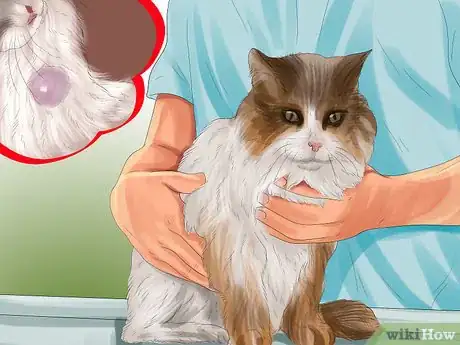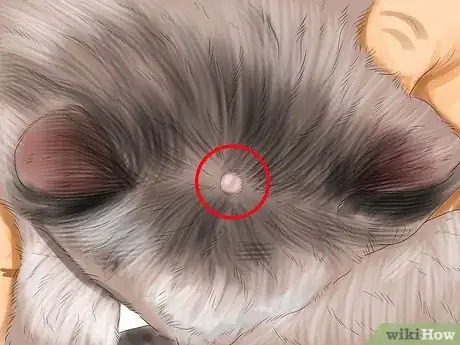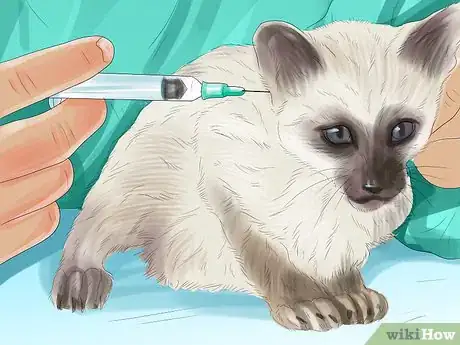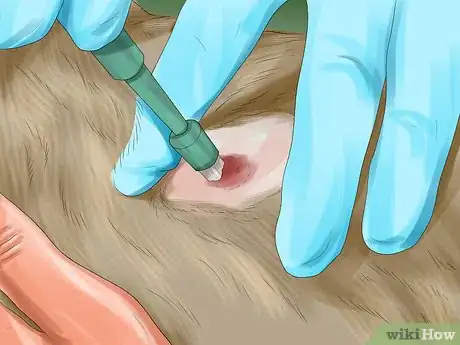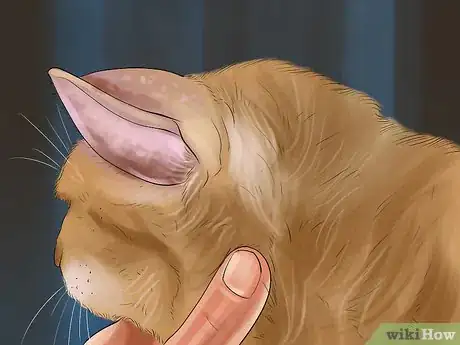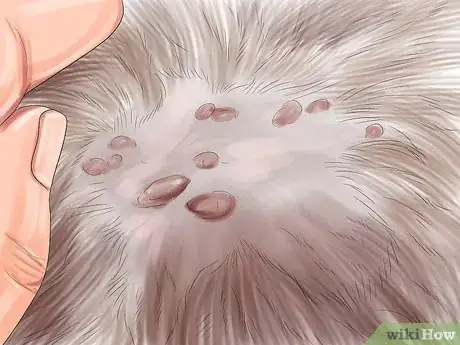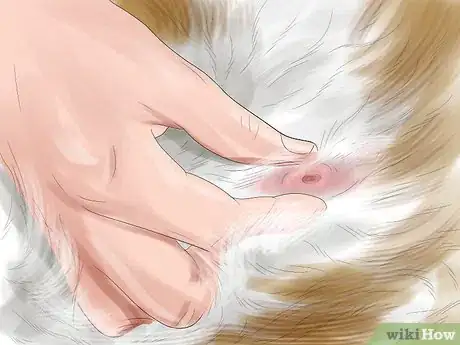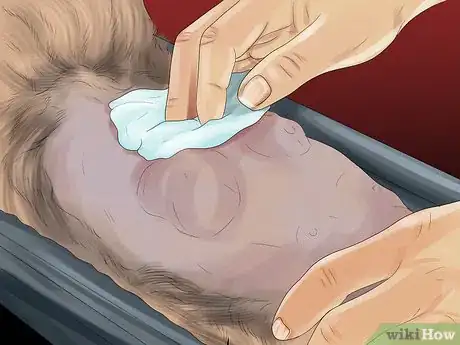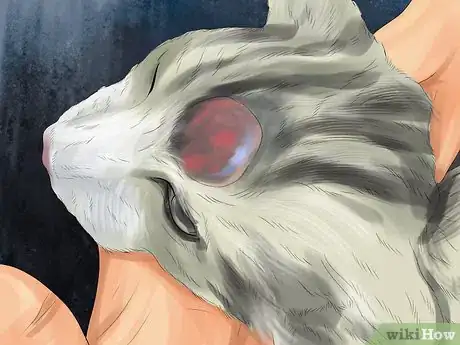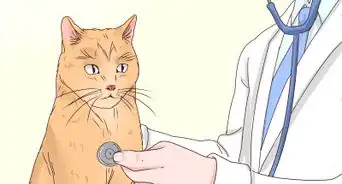This article was co-authored by Lauren Baker, DVM, PhD. Dr. Lauren Baker is a Veterinarian and Assistant Scientist at the University of Wisconsin-Madison. With over 10 years in veterinary medicine, she specializes in the concept of “one health,” which uses insights from veterinary medicine to help human medical research. She holds a Ph.D. in Comparative Biomedical Sciences, a Doctor of Veterinary Medicine, an MS in Comparative Biomedical Sciences, and a Bachelor’s degree in Psychology from the University of Wisconsin-Madison.
This article has been viewed 280,641 times.
Many cats will develop lumps at some point in their lives. Still, it can be frightening to find a new lump on your pet. Some are entirely harmless, while some will need to be addressed by a veterinarian as soon as possible. In general, it’s worth having a vet look at any lumps you are unsure of. Monitor for other symptoms that may indicate the type of lump your cat has and share this information with your vet.
Steps
Visiting Your Veterinarian
-
1See a vet as soon as possible about new lumps. In general, you should have any lumps that last more than a week or two checked out by your vet. However, it’s worth noting that small lumps that are not growing, oozing anything, or bothering your cat are unlikely to be dangerous.
- If a lump appears suddenly and grows noticeably, take your cat to the vet at your earliest convenience.
-
2Monitor seemingly innocuous lumps. Some lumps will be entirely harmless. For instance, hard tissue that forms at the site of an injury or after a surgery is most likely simply scar tissue. However, if a lump ever seems to bother your cat or seems infected, have it looked at right away.Advertisement
-
3Allow your vet to do tests. Your vet will likely be able to determine whether a particular lump is fluid-filled, such as an abscess, or is solid, such as a tumor or cyst. However, they will not be able to determine whether a tumor is harmless or dangerous without doing tests. They will likely need to use a needle or scalpel to remove a small amount of tissue from the lump and test it in a lab.
- Note that their initial tests will be quick, easy, and safe. They can likely be completed while your cat is awake, and will cause little to no pain.
-
4Agree to a biopsy. Your vet will recommend a biopsy if they are not able to determine the cause of a lump through initial tests. Your cat will be anesthetized so that part or all of the lump can be removed. This is worthwhile, as it allows your vet to get a definitive diagnosis on the cause of the lump.
Considering Likely Causes
-
1Determine whether the cat has been fighting. Abscesses are a common type of lump that usually form a few days after a fight with another cat or dog. They are rather large and filled with fluid. If you notice your cat seems feverish or unwell and has a lump with a scab in the middle, it is likely an abscess.[1]
- Abscesses are bacterial infections. While they are usually not too dangerous, it’s best to have a vet look at them. They can drain the fluid and prescribe your cat antibiotics to rid their body of infection.
-
2Assess whether an ear lump is a haematoma. Blood can collect beneath the skin at the site of a minor injury. This will form a swollen, fluid-filled lump called a haematoma. Haematomas are common on cats that shake their head vigorously and damage the capillaries between the cartilage and skin of their ear.
- Haematomas need to be evaluated by a veterinarian. There is usually an underlying cause of a haematoma, which requires treatment. For example, it may be the result of ear mites or an infection that caused your cat to damage their ear.
-
3Have cysts removed. Some cysts may be caused by blocked hair follicles or oil ducts. If a lump appears suddenly but doesn’t change, and has a hair growing from its center, it may be a cyst. They can be left alone if they do not repeatedly get infected or bother your cat.
- If you're unsure, the safest option is having a vet check on a cyst and determine whether it should be removed.
-
4Consider a potential food allergy. If you have recently changed the type of food you feed your cat and notice lumps on their head and neck, the lumps are likely evidence of an allergic reaction. Discontinue feeding them that food and see if the lumps subside.[2]
- Lumps of this sort will be small, pale, and filled with fluid.
- While the lumps themselves are not dangerous, your cat may hurt itself by scratching.
-
5Rule out flea bites. If lumps are small, reddish, and slightly pointed, they are likely flea bites. They will usually be accompanied by scratching, and maybe hair loss. Talk to your vet about how to get rid of the fleas, and watch out for wounds on your cat’s skin where they are constantly licking and scratching.[3]
Identifying Different Types of Tumors
-
1Check your cat for tumors regularly. Check for lumps on your cat every month, and whenever their behavior changes. If a lump turns out to be a tumor, the sooner it is addressed, the better. Start by placing both of your hands on top of your cat’s head and petting them around their ears and beneath their neck. Then check their front legs, beneath the shoulders, and down their back and belly. Finally, feel their hips and back legs.[4]
- Call your vet or set up an appointment to have any new lumps inspected.
-
2Recognize a benign tumor. Tumors that are benign, meaning that they are not cancerous, will generally grow very slowly. You may notice one when it is still small, and may never even notice a change in size. Lumps from benign tumors will be rounded and firm. You may be able to move them around beneath the skin. The skin itself will not appear unhealthy.[5]
- Benign tumors are generally not a risk to your cat, but it’s worth having a vet check it out. Some tumors that seem benign can still be cancerous.
- Your vet will likely recommend removal of a tumor on a cat’s face or legs, even if it’s benign. Otherwise, they will likely recommend leaving a benign tumor alone.
-
3Have any growing lump checked out. Malignant, cancerous tumors pose a risk to your cat and should be addressed immediately. Fortunately, they are also relatively easy to identify. Foremost, malignant tumors will seemingly appear suddenly, be surprisingly large, and will grow noticeably quickly. They may be an odd shape, and the skin above them may appear discolored or otherwise unhealthy.
References
- ↑ http://www.vetstreet.com/care/abscesses-and-bite-wounds-in-cats-and-dogs
- ↑ https://www.vet.cornell.edu/departments-centers-and-institutes/cornell-feline-health-center/health-information/feline-health-topics/food-allergies
- ↑ http://www.fleabites.net/flea-bites-on-dogs-and-cats-how-to-tell-if-your-pet-has-fleas/
- ↑ http://www.whiskas.com/CatsCorner/Article/How-to-Detect-Health-Problems
- ↑ http://www.pethealthnetwork.com/cat-health/cat-diseases-conditions-a-z/lipomas-cats
About This Article
To identify lumps on your cat, first feel for any new lumps by petting your cat around its ears, under its neck, on its legs and hips, under its shoulders, and down its belly and back. If you find a lump that's round and firm underneath a healthy-looking area of skin, it might be a benign tumor. If you find a lump that has a hair growing from the center, it may be a cyst. A swollen, fluid-filled lump near your cat's ear could be a haematoma, which are common on cats that shake their heads a lot. Regardless of the type of lump you discover, it's important that you have it inspected by a vet in case it's cancerous or a sign of an underlying issue. To learn how to treat your car for a lump with the help of a vet, keep reading!
